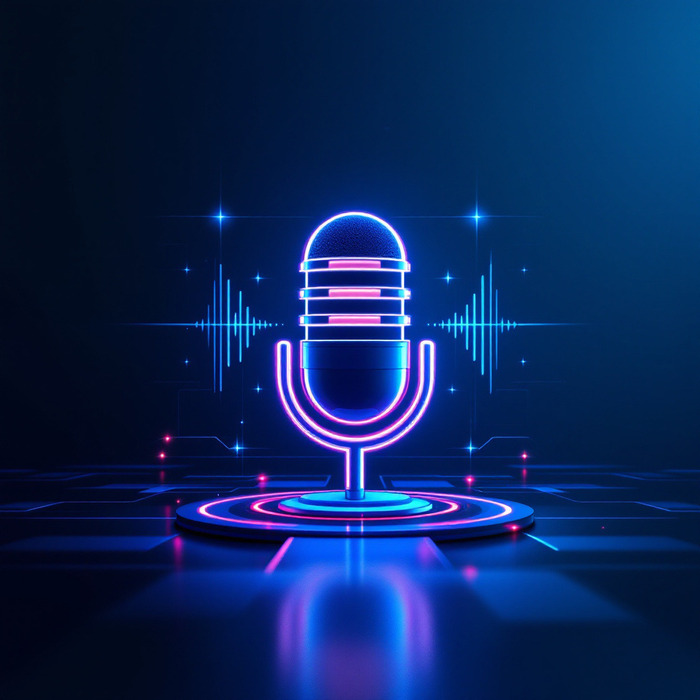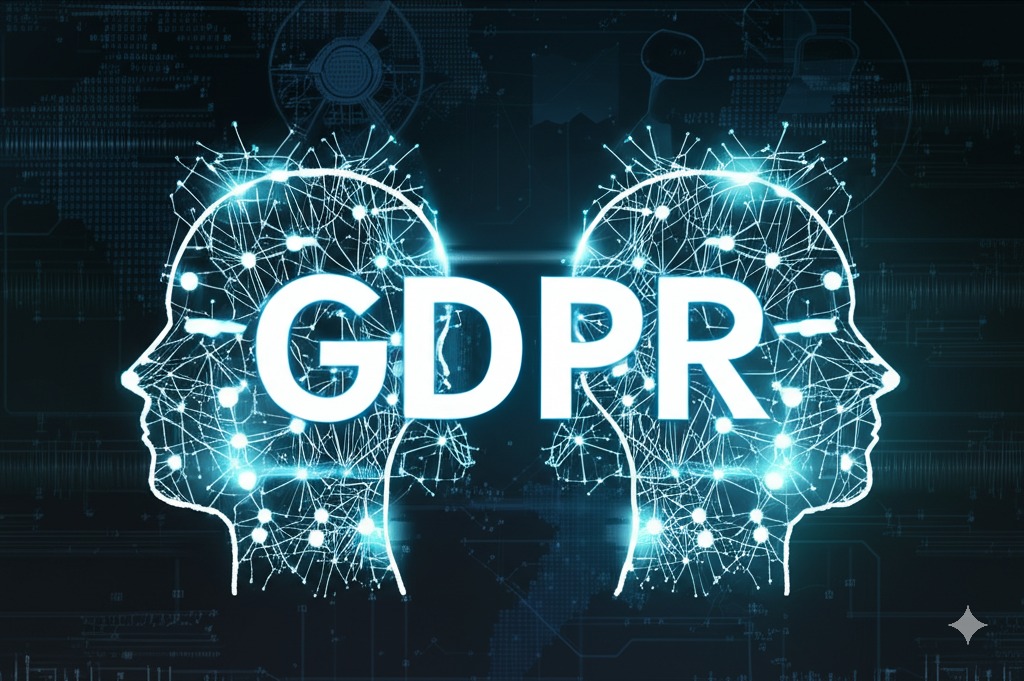
What is GDPR Compliance for AI Voice Data?
GDPR compliance for AI voice data is about following EU privacy laws when handling voice recordings. Voice data counts as personal information under GDPR. Companies need permission before collecting anyone’s voice. They must also store this data safely. People have the right to access or delete their voice recordings. This guide explains the basic requirements for following GDPR rules when working with voice AI.
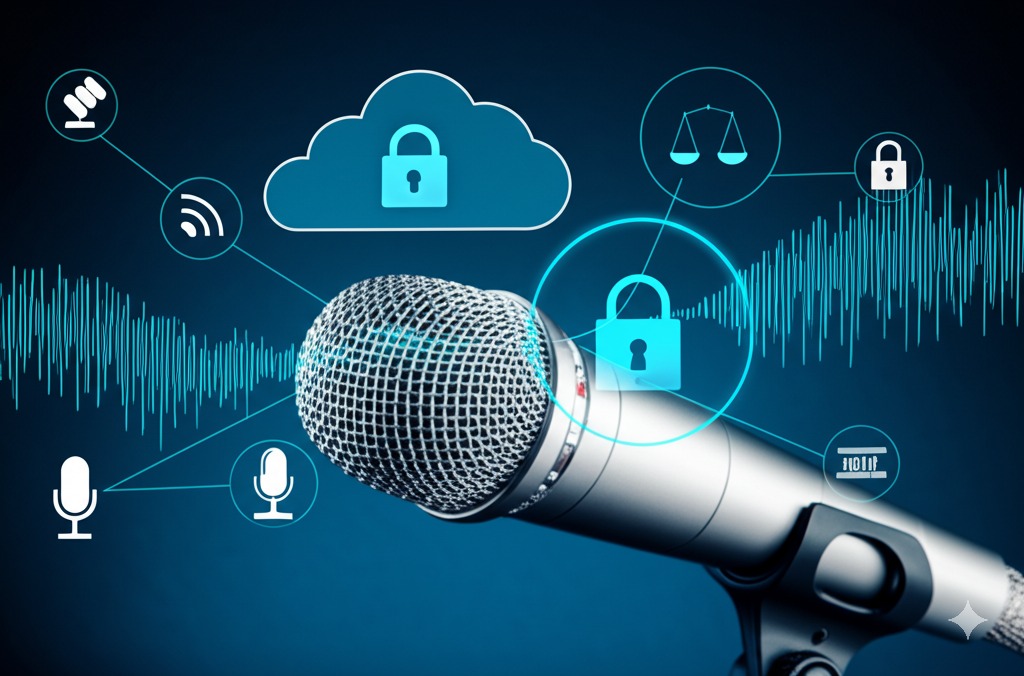
Understanding Voice Data Under GDPR Laws
Voice data is special under GDPR. It’s not just personal data – it can also be biometric voice data GDPR information. This means it needs extra protection. When a company records someone’s voice for AI use, they must follow stricter rules.
The law sees voice data in two ways:
- As regular personal data (like a name or email)
- As biometric data (when used to identify someone)
Most voice AI GDPR requirements apply when companies use voice recordings to recognize or identify people. This happens in voice assistants, phone banking, and security systems.
Why Voice Data Needs Special Protection
Voice recording data protection regulation exists because voice contains unique information. A person’s voice can reveal:
- Their identity
- Sometimes their mood or health
- Personal conversations and information
Companies developing voice technology need to understand these rules. Voice assistants, call centers, and voice recognition systems all must follow GDPR voice data compliance standards.
Key GDPR Requirements for Voice AI Systems
Getting Proper Consent
For GDPR voice consent mechanisms to work, they must be clear. Companies must tell people:
- That their voice is being recorded
- Why it’s being recorded
- How long it will be kept
- Who will have access to it
The consent must happen before recording starts. Simple pop-ups or automated messages can work for this. For example, most voice assistants ask for permission during setup.
Learn more about getting proper consent in AI voice assistants for websites.
Data Minimization
Companies should only collect the voice data they really need. This is a basic part of voice AI data processing compliance. If a system only needs to recognize commands, it shouldn’t store entire conversations.
Some ways to minimize voice data:
- Delete recordings after they’re processed
- Only save parts needed for the service
- Use anonymous voice samples when possible
Security Requirements
Voice biometric security requirements include:
- Encryption for stored voice recordings
- Access controls (limiting who can hear recordings)
- Regular security testing
- Breach notification plans
These measures protect voice data from hackers and leaks. When voice processing legal requirements aren’t followed, companies can face large fines.
For those working with voice data in customer service, check out text-to-speech for customer service.
Voice Data Subject Rights
People have specific voice data subject rights under GDPR. These include:
Right to Access
Anyone can ask a company for copies of their voice recordings. Companies must provide this information within 30 days. This can be challenging for voice AI systems that process thousands of recordings.
Right to Erasure (Deletion)
People can ask companies to delete all their voice recordings. This is sometimes called the “right to be forgotten.” Companies must have systems ready to find and delete specific voice samples.
This gets complicated with AI training. Once a voice helps train an AI model, removing just that voice can be technically difficult.
Right to Object
People can object to having their voice processed in certain ways. For example, they might allow basic processing but not want their voice used for marketing or research.
International Voice Data Transfers
Moving voice data between countries creates extra challenges. Voice data international transfer GDPR compliance guide principles include:
- Getting specific consent for international transfers
- Having legal agreements with overseas partners
- Checking that other countries have similar privacy laws
Companies using cloud services often transfer voice data across borders without knowing it. This requires special attention to stay compliant.
Privacy by Design for Voice AI
How to implement GDPR compliance for voice AI systems starts with good design. Privacy by design means building protection into voice systems from the beginning.
Good practices include:
- Building automatic deletion into the system
- Creating easy ways for people to access their data
- Making privacy settings easy to find and use
Voice AI developers can learn from AI voice generators for content creation.
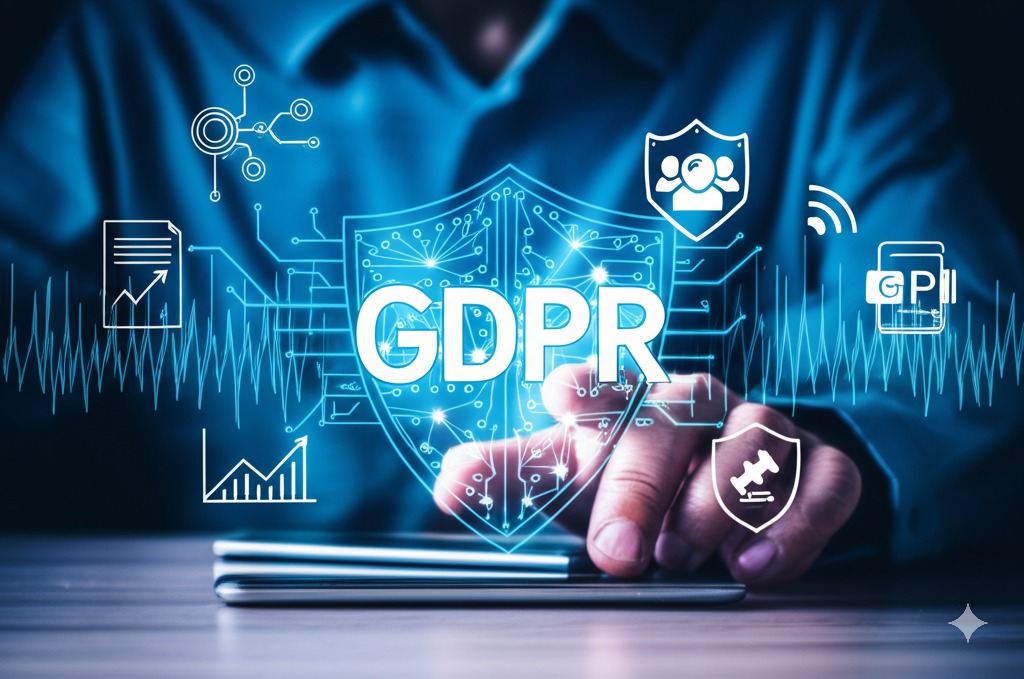
GDPR Compliance in Different Voice Applications
Voice Assistants
Smart speakers and digital assistants collect lots of voice data. They need clear privacy in voice AI applications policies. Most now have wake word detection that only starts recording after hearing a trigger phrase.
Call Centers and Phone Systems
Many companies record calls for training or quality purposes. These recordings must follow GDPR rules too. This means telling callers they’re being recorded and why.
For more on voice technology in business, see text-to-speech for IVR systems.
Voice Authentication Systems
Banks and other services sometimes use voice prints to verify identity. These systems have the strictest requirements since they directly use biometric voice data GDPR information.
Technical Approaches to Voice Data Protection
Meeting technical requirements for voice data protection under GDPR involves several methods:
Anonymization Techniques
Companies can remove identifying information from voice samples. This might mean:
- Changing voice pitch or tone
- Removing background noises that might reveal location
- Splitting recordings into smaller pieces
Data Encryption
All voice data should be encrypted. This means:
- Encryption during transfer (when sending recordings over networks)
- Encryption during storage (when keeping recordings in databases)
- Secure encryption keys
Access Controls
Not everyone in a company should hear voice recordings. Access controls limit who can listen to what. This is part of any good voice data governance framework.
Data Protection Impact Assessments
Before starting new voice AI projects, companies should complete a voice assistant technology data protection impact assessment. This helps identify and fix privacy problems early.
These assessments look at:
- Risks to people’s privacy
- Security measures in place
- How data flows through the system
- Ways to reduce possible harm
Practical Steps for Companies Using Voice AI
- Map out where voice data comes from and where it goes
- Create clear privacy policies about voice collection
- Build systems for handling access and deletion requests
- Train staff on voice data protection
- Check that voice AI vendors also follow GDPR
For companies using text-to-speech technology, review AI text-to-speech solutions for compliant options.
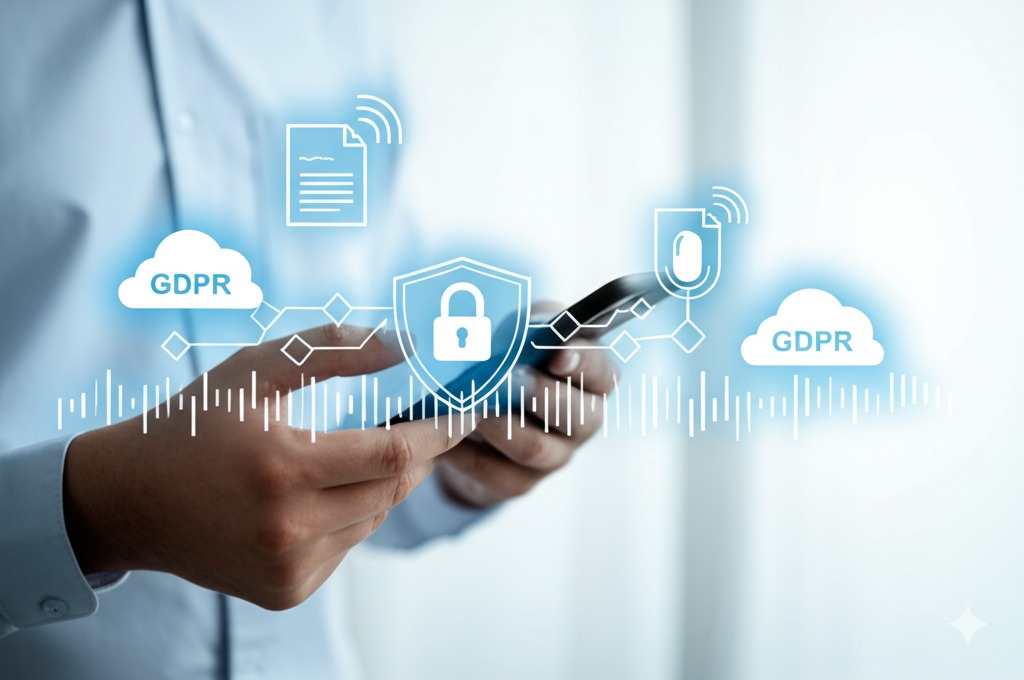
Common Questions About GDPR and Voice Data
Is all voice data considered biometric under GDPR?
Not always. Voice data is only biometric when used to identify people. A simple recording that isn’t used for identification might be personal data but not biometric data.
How long can companies keep voice recordings?
GDPR doesn’t set specific time limits. Companies should keep voice data only as long as needed for the original purpose. After that, they should delete it.
Do small companies need to follow the same rules?
Yes. GDPR applies to all organizations regardless of size. However, some record-keeping requirements are simpler for small companies.
What happens if companies break these rules?
Fines can be up to €20 million or 4% of global annual revenue, whichever is higher. Companies might also have to stop collecting voice data until they fix the problems.
Conclusion
GDPR compliance for AI voice data is not that complicated once you break it down. Voice data needs extra protection because it can tell a lot about someone. Companies using voice AI need to ask permission first. They must keep the data safe. And they need to let people see or delete their voice recordings.
Voice technology is now used everywhere, from voice SEO to AI audiobooks. Following data protection regulation for voice technology builds trust. It also avoids big fines from regulators. Simple steps now save problems later.

